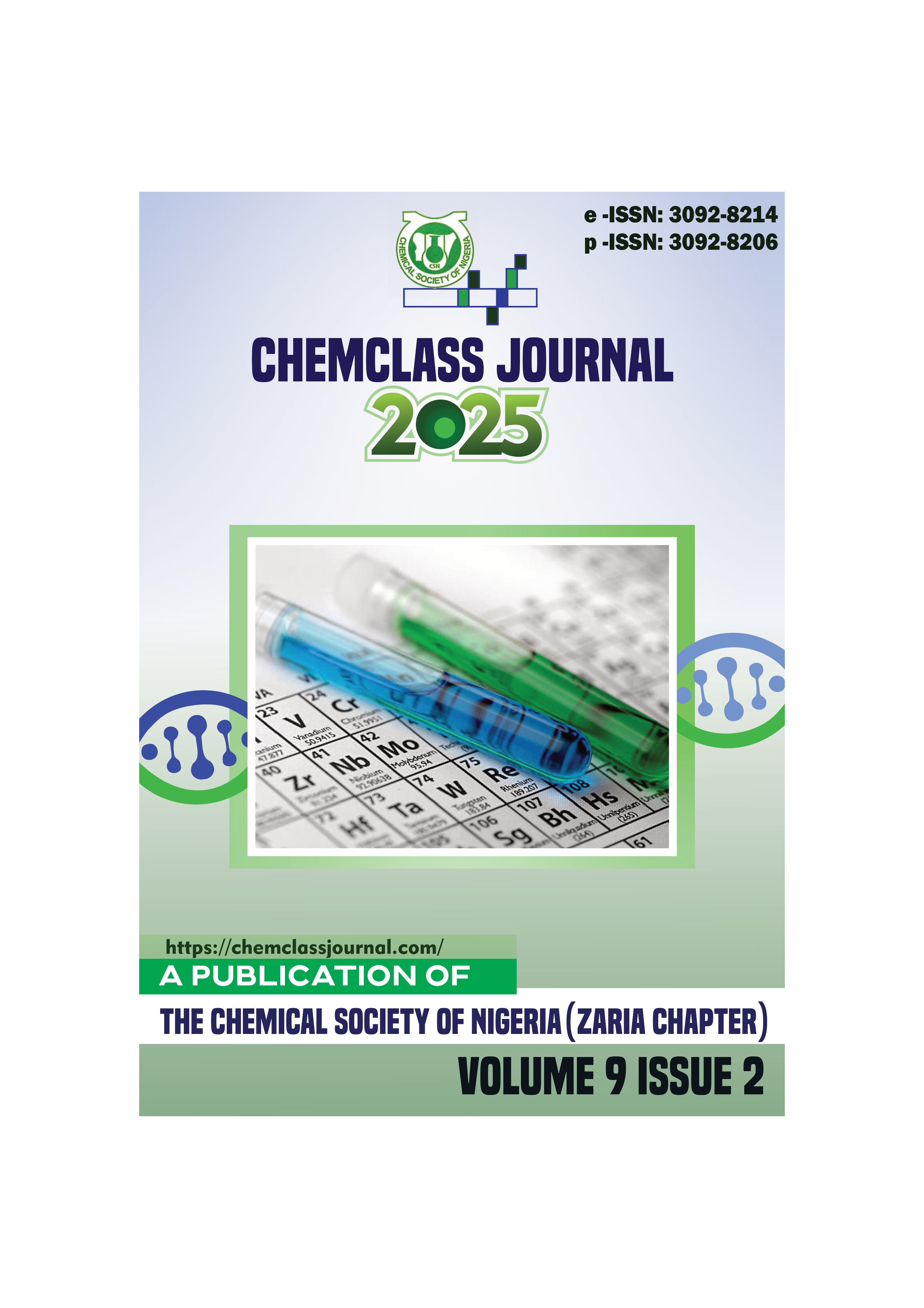Evaluation of Active Principles and Antibacterial Activity of Chrysophyllium cainito Leaf Extract Using Different Solvents
DOI:
https://doi.org/10.33003/chemclass-2025-0901/139Keywords:
Antimicrobial , Bioactive , Chrysophyllum cainito , GC-MSAbstract
Chrysophyllum cainito, (C. cainito) commonly known as “Udara mbeke” in some places in Ebonyi State,
Nigeria is a medicinal plant that has gained much attention due to its multiple benefits to human health. In
this research, active principles and antibacterial activity of the leaf extracts were evaluated using selected
clinically strain resistant organisms (Escherichia coli, Staphylococcus aureus and Vibrio cholera. Gas
Chromatography-Mass Spectroscopy (GC-MS) results revealed a total of 21, 28, and 30 compounds in
ethanol, n-hexane, and ethyl acetate extract respectively along side with their percentage total ion
concentrations (%tic). The compound tentatively identified includes: Benzoic acid; 3-amino-3-methylbutyl
ester (2.781%) with molecular weight 207, molecular formula C12H17NO2, retention time (RT) 11.932
minutes, base peak at m/z of 137; Oxepine (11.789%) molecular weight 220, molecular formula C15H24O,
RT 18.990 minutes, base peak at m/z 82 and1,2-Benzenedicarboxylic acid-bis(2-methylpropyl) ester
(15.981%) with molecular weight of 278, molecular formula C16H22O4, RT 11.561 minutes and base peak
at m/z 149. The FTIR revealed absorption bands at 3608 cm-1, 3257 cm-1 and 3246 cm-1, from O−H
stretching vibration of phenol, alcohol, and carboxylic acid. Alkanes (sp3 C−H stretching), were absorbed
at 2926 cm−1, 2922 cm−1, and 2855 cm−1. The C. cainito crude extracts exhibited strong antimicrobial
property with zone of inhibition range of 16±1.50 to 36±2.00 mm. Ethyl Acetate extract has the highest
Zone of Inhibition 36±2.00(mm) on E. coli followed by V. cholerae 30±4.00(mm) and S. aureus
28±2.00(mm). EtOH extracts shows 28±0.00 (mm) MIC on E. coli while S. aureus and V. cholerae have
16±1.50(mm) and 16±1.52(mm) respectively. N-Hexane extract was not effective at all against the three
bacteria species. This finding suggested the potential application of Chrysophyllum cainito in the treatment
and prevention of infectious diseases caused by pathogenic microorganisms.





 ChemClass Journal
ChemClass Journal
